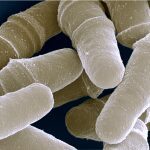Lien vers Pubmed [PMID] – 23395907
Lien vers HAL – Cliquez ici
Lien DOI – 10.1038/emboj.2013.9
EMBO J. 2013 Mar;32(5):742-55
Completion of DNA replication needs to be ensured even when challenged with fork progression problems or DNA damage. PCNA and its modifications constitute a molecular switch to control distinct repair pathways. In yeast, SUMOylated PCNA (S-PCNA) recruits Srs2 to sites of replication where Srs2 can disrupt Rad51 filaments and prevent homologous recombination (HR). We report here an unexpected additional mechanism by which S-PCNA and Srs2 block the synthesis-dependent extension of a recombination intermediate, thus limiting its potentially hazardous resolution in association with a cross-over. This new Srs2 activity requires the SUMO interaction motif at its C-terminus, but neither its translocase activity nor its interaction with Rad51. Srs2 binding to S-PCNA dissociates Polδ and Polη from the repair synthesis machinery, thus revealing a novel regulatory mechanism controlling spontaneous genome rearrangements. Our results suggest that cycling cells use the Siz1-dependent SUMOylation of PCNA to limit the extension of repair synthesis during template switch or HR and attenuate reciprocal DNA strand exchanges to maintain genome stability.

